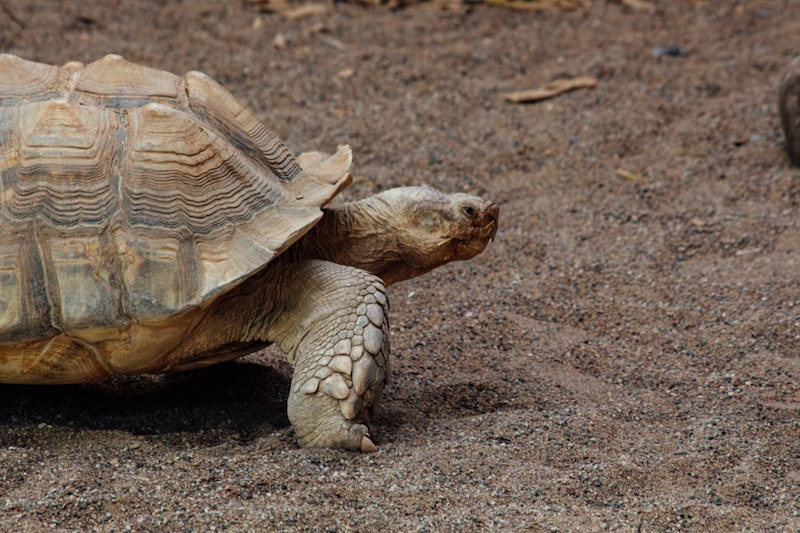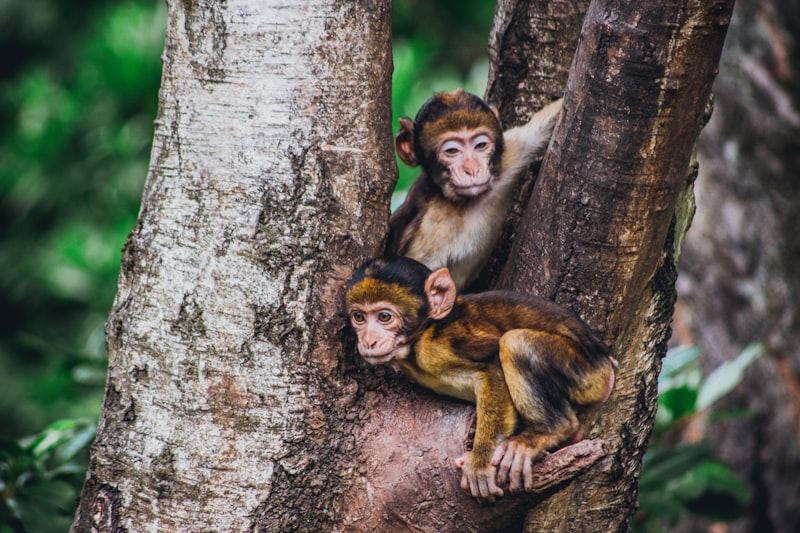Have you ever wondered about the significance of endangered species lists? These compilations of vulnerable wildlife play a crucial role in conservation efforts worldwide. They highlight species facing the threat of extinction due to various factors such as habitat loss, climate change, poaching, and pollution.
The main purpose of endangered species lists is to raise awareness and prompt action. By identifying species at risk, conservationists can prioritize efforts to protect them. Governments, non-profit organizations, and researchers use these lists to allocate resources effectively and implement conservation strategies. It’s like having a blueprint for safeguarding biodiversity.
Listing a species as endangered involves rigorous scientific assessment. Experts evaluate population trends, habitat availability, and threats faced by the species. This data-driven approach ensures that conservation efforts are based on solid evidence.
Moreover, endangered species lists serve as a barometer of environmental health. A decline in wildlife populations often signals broader ecological imbalances that could impact human well-being. Thus, preserving biodiversity isn’t just about saving cute or iconic animals; it’s about maintaining the delicate balance of ecosystems that support life on Earth.
Understanding these lists also underscores the interconnectedness of species. The disappearance of one species can trigger cascading effects throughout an ecosystem. For instance, the loss of pollinators like bees can jeopardize food production for humans and other animals.
Decoding Endangered Species Lists: What They Mean for Global Biodiversity
Have you ever wondered what those “endangered species” lists really signify for our planet’s biodiversity? These lists aren’t just about cataloging animals and plants; they’re crucial barometers of our planet’s health and resilience. Let’s delve into what these lists mean and why they matter.
Firstly, what qualifies a species to be listed as endangered? It’s not just about being rare; it’s about being at risk of extinction. Factors like habitat loss, climate change, poaching, and pollution play pivotal roles. When a species is labeled as endangered, it means scientists have identified a significant decline in its population and are sounding the alarm about its future survival.
These lists serve as vital wake-up calls. They highlight the urgency of conservation efforts and the need for global cooperation. Imagine them as red flags in a race where we must preserve Earth’s biological diversity before it’s too late. Each species represents a unique thread in the intricate web of life, and losing one can unravel the fabric of entire ecosystems.
Take the majestic tiger, for instance. Once abundant across Asia, its population has dwindled drastically due to habitat destruction and illegal hunting. Seeing it on the endangered list isn’t just a notation; it’s a stark reminder of the impact of human activities on wildlife.
Moreover, these lists aren’t just about individual species; they’re about interconnectedness. The decline of one species can trigger a cascade effect, affecting others in its ecosystem. Picture a Jenga tower: remove one crucial block, and the stability of the entire structure is jeopardized.
In essence, decoding endangered species lists goes beyond biology; it’s about our ethical responsibility to safeguard the natural world. It prompts us to reflect on how our actions today shape the biodiversity of tomorrow. By understanding what these lists signify, we empower ourselves to take meaningful action towards conservation and sustainable living.
Understanding these nuances is pivotal in fostering a mindset of stewardship towards our planet’s rich tapestry of life. So, next time you hear about an endangered species, think beyond the list—think about what it represents for the future of global biodiversity.
The Importance of Endangered Species Lists: Preserving Earth’s Natural Heritage
Have you ever wondered about the intricate web that binds all living beings on our planet? It’s a delicate balance, where each species plays a crucial role. Yet, many species are currently under threat of extinction, facing challenges that jeopardize their existence. This is where the importance of endangered species lists becomes evident.
These lists serve as vital tools in conservation efforts, cataloging species that are at risk of disappearing forever. By identifying and prioritizing these species, conservationists can focus their resources on protecting them and their habitats. This proactive approach is essential because once a species is lost, it’s gone forever, disrupting the ecosystem it once belonged to.
Imagine a forest where a particular bird species has vanished. Its absence could lead to an overpopulation of insects that were once its prey, affecting the entire ecosystem. This domino effect demonstrates how interconnected species are and highlights the significance of maintaining biodiversity through endangered species lists.
Moreover, these lists raise awareness among the public and policymakers about the urgency of conservation. They provide a clear picture of the state of biodiversity globally and locally, prompting action to address threats such as habitat destruction, climate change, pollution, and illegal wildlife trade.
Think of endangered species lists as a beacon of hope, guiding us towards a future where our natural heritage thrives. Each species listed represents a unique evolutionary journey and ecological niche. By protecting them, we safeguard not only their survival but also the countless benefits they provide to ecosystems and humanity alike.
Inside Endangered Species Lists: Criteria and Conservation Efforts Unveiled
First off, being labeled as endangered isn’t a quick decision. It’s a process involving rigorous assessments by experts. Animals are evaluated based on factors like population size, reproductive rates, and threats to their habitat. If a species is at risk of disappearing, it gets added to the list. This isn’t just a badge of honor—it’s a call to action.
Conservation efforts kick into high gear once a species is listed. Imagine a relay race where each runner passes the baton to the next. That’s how conservation works. Organizations, governments, and passionate individuals team up to protect habitats, reduce threats like poaching or habitat destruction, and sometimes even breed endangered species in captivity to boost their numbers.

Take the majestic tiger, for example. Tigers are iconic, yet they’ve faced serious challenges due to habitat loss and illegal hunting. Conservationists have stepped in, setting up protected areas and working with local communities to ensure tigers have safe spaces to roam. It’s a race against time, but every small victory counts.
So, why should we care? Think of endangered species as threads in a tapestry. Each thread plays a crucial role in the whole picture. When one thread is pulled, the entire tapestry starts to unravel. Losing species means losing biodiversity, which affects everything from ecosystems to our own well-being.
Exploring Endangered Species Lists: Key Species at Risk Around the World
Have you ever wondered about the creatures that share our planet but are in danger of disappearing forever? Exploring endangered species lists reveals a sobering reality about the fragile balance of our ecosystems. These lists highlight animals and plants that are at risk of extinction due to various threats like habitat loss, climate change, poaching, and pollution.
One of the iconic species on these lists is the giant panda. These gentle giants are native to China and known for their distinctive black and white fur. Despite efforts to conserve their bamboo forest habitats, pandas remain endangered. Their dwindling numbers serve as a poignant reminder of the challenges faced by many species today.
Another notable mention is the black rhinoceros, native to Africa. Renowned for their impressive horns, these rhinos are critically endangered due to relentless poaching driven by the demand for their horns in traditional medicine and as status symbols. Conservation efforts have had some success, but the black rhino population remains precariously low.
In South America, the Amazonian jaguar faces increasing threats from deforestation and conflicts with humans. Jaguars play a crucial role in maintaining the biodiversity of their habitats, yet their numbers are declining rapidly. Efforts to protect these elusive big cats are crucial to their survival and the health of the Amazon rainforest ecosystem.
Closer to home, the North Atlantic right whale is a species of great concern. These majestic creatures, once abundant along the Atlantic coast of North America, are now critically endangered due to entanglement in fishing gear and collisions with ships. With only a few hundred individuals left, urgent action is needed to prevent their extinction.

Each species on the endangered list has a unique story, but they all share a common thread of being vulnerable to human activities. From the tiny vaquita porpoise in Mexico to the magnificent Siberian tiger in Russia, these creatures remind us of our responsibility to protect and preserve biodiversity. By raising awareness and supporting conservation efforts, we can ensure that future generations continue to marvel at the diversity of life on Earth.
Unraveling the Science Behind Endangered Species Lists: A Closer Look
Have you ever wondered about the intricate workings behind those lists of endangered species? It’s not just a simple catalog; it’s a meticulously researched document that plays a crucial role in conservation efforts worldwide.
At its core, an endangered species list is a comprehensive inventory that identifies plant and animal species facing the risk of extinction. But how do scientists determine which species make the list? It’s not merely a matter of counting numbers; rather, it involves a complex evaluation of several factors.
Firstly, scientists assess the population size of a species. If a species has a dwindling population that cannot sustain itself naturally, it raises concerns about its survival. Additionally, they look at the species’ habitat and its ability to support viable populations. Habitat loss due to human activities like deforestation or urbanization is a significant threat to many species.
Another critical factor considered is the reproductive success of the species. Low reproductive rates or challenges in breeding can further jeopardize a species’ survival. Scientists also evaluate the species’ distribution range—are they confined to a small, isolated area, or do they have a broader range?
Human impacts play a pivotal role in species endangerment. Factors such as poaching, pollution, climate change, and invasive species all contribute to the decline of vulnerable species. Understanding these impacts helps conservationists formulate strategies to mitigate threats and protect habitats.
The process of listing a species as endangered involves rigorous scientific assessment, often conducted by organizations like the International Union for Conservation of Nature (IUCN). These assessments provide a standardized framework for understanding the conservation status of species worldwide.
The science behind endangered species lists is a multifaceted approach that integrates ecological data, population dynamics, and anthropogenic impacts. By unraveling these complexities, scientists and conservationists can prioritize their efforts effectively, aiming to preserve Earth’s biodiversity for future generations.
Frequently Asked Questions
How are species categorized on endangered lists?
Learn how species are categorized on endangered lists, detailing criteria like population size, habitat loss, and threats faced. Understand the classification levels from vulnerable to critically endangered, based on scientific assessment and conservation status.
Why are endangered species lists important?
Discover why endangered species lists are crucial for conservation efforts worldwide. Learn how these lists prioritize protection measures, raise awareness, and guide policies to safeguard biodiversity for future generations.
What is an endangered species list?
An endangered species list is a compilation identifying species at risk of extinction due to declining populations or threats to their habitats. It helps prioritize conservation efforts and regulatory measures to protect these vulnerable species.
Who maintains endangered species lists globally?
Discover who maintains endangered species lists worldwide. Get clear and concise answers on the global organizations responsible for monitoring and updating these critical lists.
How are species removed from endangered lists?
Species are removed from endangered lists based on scientific assessments that show their populations have sufficiently recovered. This process involves rigorous monitoring and evidence of stable or increasing numbers in the wild, ensuring that the species’ survival is no longer critically threatened.


